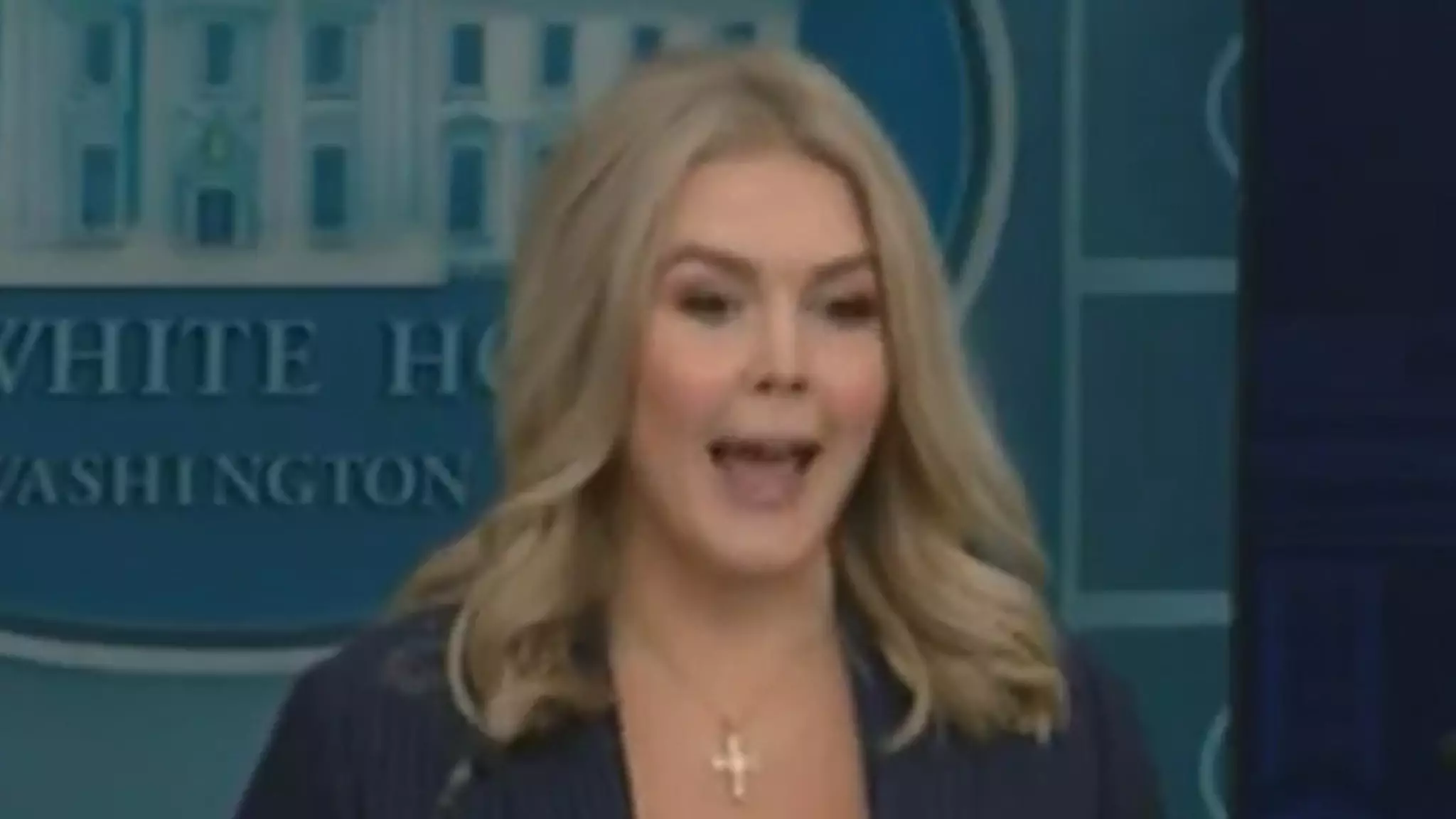The interaction between the Trump administration and the media has always been a contentious one, marked by frequent confrontations and a palpable atmosphere of distrust. Recently, press secretary Karoline Leavitt’s comments highlighted the administration’s uncompromising stance on media integrity and language. By invoking the president’s executive orders regarding the naming of the Gulf of Mexico, Leavitt aims to enforce a new narrative that aligns with the administration’s standards, suggesting that dissenting media outlets would face repercussions. This scenario encapsulates the tension between governmental authority and journalistic freedom, raising questions about the boundaries of both.
The Implications of Language Control
At the core of this incident lies a deeper issue about the control of language and the implications it has for free speech. By demanding that news organizations conform to a newly-formed nomenclature—namely referring to the Gulf of Mexico as the Gulf of America—Leavitt’s rhetoric seems to illustrate the administration’s growing disenchantment with traditional media practices. The Associated Press, which has taken the position of referring to the waters by their internationally recognized name, stands as an example of a journalistic entity upholding the tenets of global reporting.
Leavitt’s insistence on adhering to presidential terminology is emblematic of a broader trend where the line between authority and expression becomes increasingly blurred. It raises the important question: Should journalists tailor their language based on the preferences of those in power, or should they maintain an independent stance that reflects global realities?
This episode brings to the forefront significant First Amendment concerns. CNN correspondent Kaitlan Collins posed a vital question regarding whether the Trump administration plans to impose consequences on media outlets that choose to resist this enforced lexicon. Leavitt’s affirmative response suggests an intention to create an environment where reporters might fear retaliation for their reporting, ultimately fostering a chilling effect on press freedoms. The notion that the president’s administration could dictate the language used by media amplifiers the stakes associated with journalistic integrity within this political climate.
Furthermore, the contrasting actions of organizations like National Geographic and Rand McNally, which have not yet adopted the new terminology, signify a reluctance to align with the president’s orders. This hesitance is not merely about language; it speaks to the very fabric of how information is disseminated and accepted in society. Upholding the principles of journalism involves not only reporting facts but maintaining a healthy distance from governmental influence.
In the final analysis, while Trump’s administration might attempt to overhaul media dynamics, it underlines an enduring struggle between the need for governmental accountability and the essential role of the press as a watchdog. The actions taken now will resonate far beyond just a naming convention; they could fundamentally shape the landscape of media freedom and public discourse in the years to come. This situation serves as a critical reminder that the relationship between the state and the press must be navigated carefully, lest we undertake a transformation detrimental to the principles of democracy.

